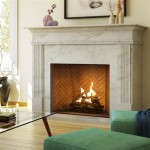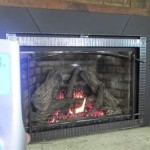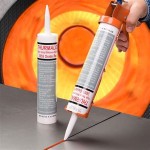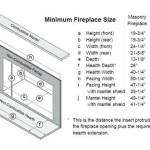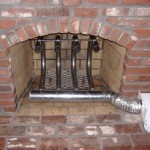How to Fix a Gas Fireplace Valve
Gas fireplace valves are essential components that regulate the flow of gas to the burner, ensuring safe and efficient operation. When a gas fireplace valve malfunctions, it can lead to a variety of issues, including a lack of flame, inconsistent heating, or even a complete shutdown. While some valve problems might require the services of a professional, there are common issues that homeowners can address themselves with a few basic tools and a bit of knowledge.
Identifying the Problem
Before attempting any repairs, it's important to identify the root cause of the valve's malfunction. Several signs can indicate that a gas fireplace valve needs attention:
- No flame or a weak flame
- Inconsistent or intermittent heating
- Unusual noises coming from the fireplace
- A gas odor near the fireplace
- The control panel is unresponsive
Once the problem is identified, it's essential to determine whether the issue lies within the valve itself or in another component of the fireplace system. A simple check of the gas line and burner can rule out any external problems.
Troubleshooting Gas Fireplace Valve Issues
Common gas fireplace valve issues can be categorized into three main areas:
1. Mechanical Issues
Mechanical issues are often related to the valve's physical components. These problems can include:
- Stuck or Worn-out Valve Stem: The valve stem is responsible for opening and closing the gas flow. If it becomes stuck or worn, it can prevent the valve from operating correctly.
- Damaged or Worn-out O-Rings: O-rings seal the gas valve to prevent leaks. Over time, they can become damaged or worn, causing gas leaks.
- Broken or Bent Valve Components: Physical damage to the valve's internal components can also prevent it from working properly. This could be due to accidental bumps, vibrations, or excessive use.
To address these issues, the valve might need to be disassembled and inspected. If necessary, the valve stem, O-rings, or other components can be replaced with compatible parts.
2. Electrical Issues
Electrical problems in the gas fireplace valve can be caused by:
- Faulty Solenoid: The solenoid is a component responsible for opening and closing the valve using an electrical signal. A malfunctioning solenoid can prevent the gas valve from opening.
- Damaged Wiring: Damaged or loose wiring can interrupt the electrical signal to the valve, causing it to malfunction.
- Broken or Defective Control Panel: Issues with the control panel can also affect the valve's operation.
Troubleshooting electrical issues involves inspecting wiring connections, testing the solenoid, and checking the control panel for faults. If necessary, the wiring can be repaired or replaced, the solenoid can be replaced, and the control panel can be repaired or replaced.
3. Gas Supply Issues
Gas supply issues can be due to:
- Low Gas Pressure: Inadequate gas pressure can prevent the valve from operating correctly.
- Clogged Gas Line: Debris or rust in the gas line can restrict gas flow, leading to a malfunctioning valve.
Addressing gas supply issues involves checking gas pressure, cleaning or replacing the gas line, and ensuring there are no obstructions in the gas supply system.
It's important to note that attempting repairs on a gas fireplace valve requires a certain degree of technical expertise. Before proceeding with any repairs, it's crucial to consult the manufacturer's instructions and, if necessary, seek assistance from a qualified professional.

Replacing A Gas Ball Valve To Your Fireplace

Replacing A Gas Ball Valve To Your Fireplace

How To Test Your Main Control Valve Www Mygasfireplacerepair Com

Obadiah S Gas Fireplace Troubleshooting Replacing The Valve

Fireplace Gas Valve Leaking Here S How To Test It

How I Installed Replaced A Gas Fireplace Valve

Gas Valve Check Does My Quarter Turn Ball Need Replaced

Gas Valve Check Does My Quarter Turn Ball Need Replaced

Troubleshooting A Gas Fireplace

Gas Fireplace Keeps Shutting Off Here S What You Can Do
Related Posts


